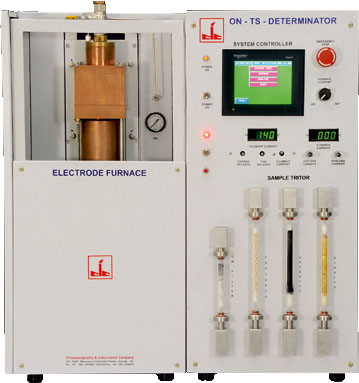Chromatography, a versatile analytical technique, encompasses a spectrum of instruments vital in separating and identifying components within a mixture. The diverse range of chromatography instruments plays a pivotal role in various industries, from pharmaceuticals to environmental analysis.
Table of Contents
Types of Chromatography Instruments & their Functionalities
Let’s explore some commonly asked questions regarding chromatography instruments:
Gas Chromatographs
Gas Chromatographs are instrumental in separating volatile compounds within a gaseous mixture. They function on the principle of partitioning compounds between a stationary phase and a mobile gas phase, thereby enabling the identification and quantification of components. Common applications include analyzing complex mixtures like petroleum products and environmental pollutants. Gas chromatography aids in drug testing, food analysis, and quality control in the manufacturing sector.

Gas chromatographs are available in various configurations and detectors, such as flame ionization detectors (FID) and mass spectrometry (MS), enhancing their versatility across different analytical needs.
Hydrogen Determinator Analyzer

Specifically designed for determining hydrogen content in various materials, the Hydrogen Determinator Analyzer plays a crucial role in industries like metallurgy, energy, and chemical processing. Its precision in measuring hydrogen levels aids in assessing material quality, ensuring compliance with industry standards, and optimizing process efficiency.
Oxygen-Nitrogen Determinator Analyzer

In industries like steel manufacturing, aerospace, and electronics, measuring oxygen and nitrogen content is imperative for material quality control. The Oxygen-Nitrogen Determinator Analyzer accurately determines these elements’ concentrations, contributing to the assessment of alloy properties, ensuring materials meet stringent specifications, and enhancing the durability and performance of end products.
Carbon Sulphur Determinator Analyzer

The Carbon Sulphur Determinator Analyzer is indispensable in industries dealing with steel, alloys, and various materials where carbon and sulfur content analysis is vital. This instrument aids in assessing material composition, ensuring compliance with regulatory standards, and optimizing manufacturing processes to achieve desired material properties.
Hydrogen-Oxygen-Nitrogen Combined Determinator Analyzer

This analyzer, integrating capabilities of determining hydrogen, oxygen, and nitrogen content, offers comprehensive analysis across multiple elements. Industries such as petrochemicals, automotive, and aerospace benefit from the Hydrogen-Oxygen-Nitrogen Combined Determinator Analyzer by obtaining precise multi-elemental data crucial for material characterization and quality control.
Online Dissolved Gas Analyser(DGA)

In power transformers and electrical equipment, detecting and analyzing dissolved gases like hydrogen, methane, and ethylene is vital to predict potential faults. The Online Dissolved Gas Analyser continuously monitors these gases, aiding in preventive maintenance, minimizing equipment failure risks, and ensuring operational safety.
Chromatography instruments play a pivotal role in analytical laboratories and industrial settings. Each instrument serves specific purposes, contributing to the quality, safety, and efficiency of various processes and products across diverse industries.
Final Thought’s
Understanding the functionalities and applications of different chromatography instruments empowers industries to make informed decisions, ensure compliance with standards, and achieve precision in material analysis and product development.
FAQ’s
What instruments are used in chromatography?
Various instruments are employed in chromatography, each serving specific purposes in separating and analyzing mixtures. These instruments include Gas Chromatographs, Liquid Chromatographs (such as High-Performance Liquid Chromatography – HPLC), Thin-Layer Chromatography (TLC), Ion Exchange Chromatography, Size Exclusion Chromatography (SEC), and Affinity Chromatography, among others.
What are the 4 main types of chromatography?
The four main types of chromatography techniques commonly used are:
1. Gas Chromatography (GC), 2. Liquid Chromatography (LC), 3. Thin-Layer Chromatography (TLC), 4. High-Performance Liquid Chromatography (HPLC).
What tools are used in chromatography?
Chromatography involves a variety of tools and equipment for different techniques. Some essential tools include chromatography columns (used to separate components), detectors (such as UV-Vis detectors or mass spectrometers), pumps (for controlling the flow of solvents), injectors (to introduce the sample), and data analysis software for interpreting results.
What are the types of chromatography in the instrumental method of analysis?
The instrumental method of analysis in chromatography encompasses several types, including Gas Chromatography (GC), Liquid Chromatography (LC), High-Performance Liquid Chromatography (HPLC), Thin-Layer Chromatography (TLC), Ion Exchange Chromatography, Size Exclusion Chromatography (SEC), and Affinity Chromatography. Each type employs different principles and techniques, offering unique advantages for specific applications in analytical laboratories and various industries.
